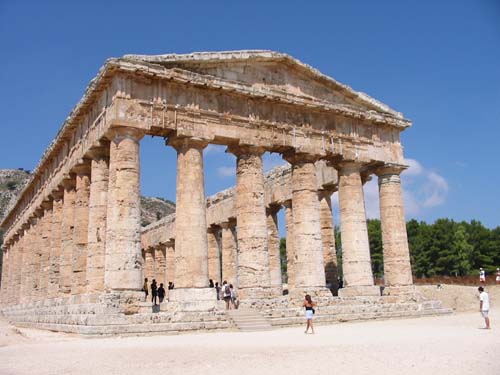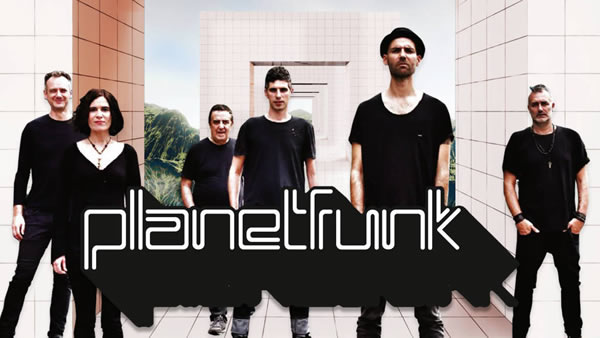

Segesta occupies a splendid position, among gently sloping hills of yellow-ochre and ruddy brown that, at times, are thrown into marked contrast by patches of variegated greens around the excavated areas. All the while, the timeless landscape is presided over by the majestic silhouette of the Doric temple. Ancient Segesta was probably founded by the Elimi; under Greek sponsorship, it soon ranked, like Erice (Eryx) among the leading towns of the Mediterranean basin. In the 5C BC, it was pitched against its great rival Selinunte (Selinus): in an attempt to rally its defences against this threat, Segesta appealed for help from Athens in 415 BC, but these reinforcements were defeated by Syracuse whose forces were allied to Selinunte. In 409 BC, Segesta turned to Carthage for support: on landing in Sicily, these troops destroyed both Selinus and Himera, In turn, Segesta was destroyed by the Syracusan tyrant Agathocles in 307 BC, and rose again under the Romans.
Subsequent developments are not documented, although it is thought that the city probably succumbed to further damage by the Vandals in the 5C AD. What is certain is that the area was inhabited in medieval times as ruins of a Norman castle and a small three-apsed basilica (later abandoned and re-built as a hermitage in the 15C), situated in the northern part of the ancient acropolis, testify. This part of the site extended over two areas separated by a hollow. The south-eastern section was predominantly residential, while the north was populated by public buildings, including the theatre.
Tempio – The Temple of Segesta, one of the most perfectly preserved monuments to survive from Antiquity, stands in majestic solitude on a hill surrounded by a deep valley, framed by Monte Bernardo and Monte Barbaro where the theatre is situated. Built in 430 BC (although scholars are divided about its exact date), the temple is a Doric building of extraordinarily harmonious proportions. The 36 columns of the peristyle are almost completely intact, their gloriously mellow golden-tinged limestone flattered by their smooth finish. The fact that the shafts are unfluted, coupled with the absence of a cella, has prompted the suggestion that the temple was abandoned before completion. This theory meanwhile is dismissed by some scholars who claim that the lack of a cella (which usually comprised the first part of the sanctuary to be undertaken) might indicate that the building was intended to consist merely of a peristyle making it a pseudo-temple. Furthermore the mystery surrounding the purpose such a construction would serve is exacerbated by the lack of any indication as to which deity it might have been dedicated.
The road up to the theatre (approx 2km: regular minibus service) provides fabulous views back over the temple. Before the theatre, on the right, are the remains of the Hermitage of San Leone with a single apse, built over the foundation of an earlier three-apsed church and, behind it, the ruins of the Norman castle.
The theatre was built in the 3C BC during the Hellenistic period, while the area was under Roman domination. It consists of a perfect semicircle with a diameter of 63m, apparently slotted into a rocky slope. The tiers of seats face west towards the hills, beyond which, to the right, may be glimpsed the broad Bay of Castellammare.
Every two years, during a summer festival, the theatre is revived by throngs of spectators eager to savour the great Classical tragedies and comedies so beloved to the ancients, in a timeless setting.
MORE INFO: http://www.sicilyweb.com/english/trapani/segesta.htm

Trapani Sud Sound Festival-PLANET FUNK
On 5 September, boat parties, DJ sets and tastings of typical local products are scheduled in the morning; in particular very inte...
29/07/2025 - dthbgn: https://community.octoprint.org/t/10-ways-to-speak-to-someone-at-holla...
***
29/07/2025 - dthbgn: https://www.purplepass.com/events/327249-carnival-cruise%C2%AE%EF%B8%8...
***
28/07/2025 - scsdac: 28/07/2025 - sdcvdv: 28/07/2025 - sdcvdv: ...
***
Via Sant'Andrea, 2 - 91100 Trapani
Tel. +39 380 471 7849 | Email: info@ababordo.it